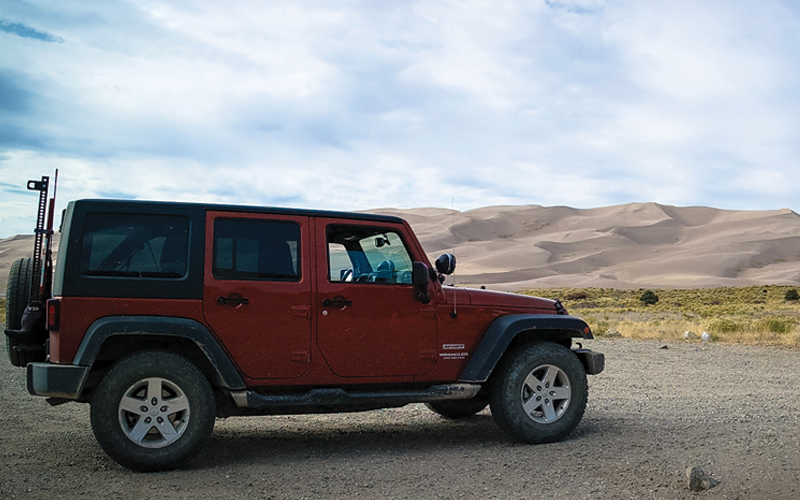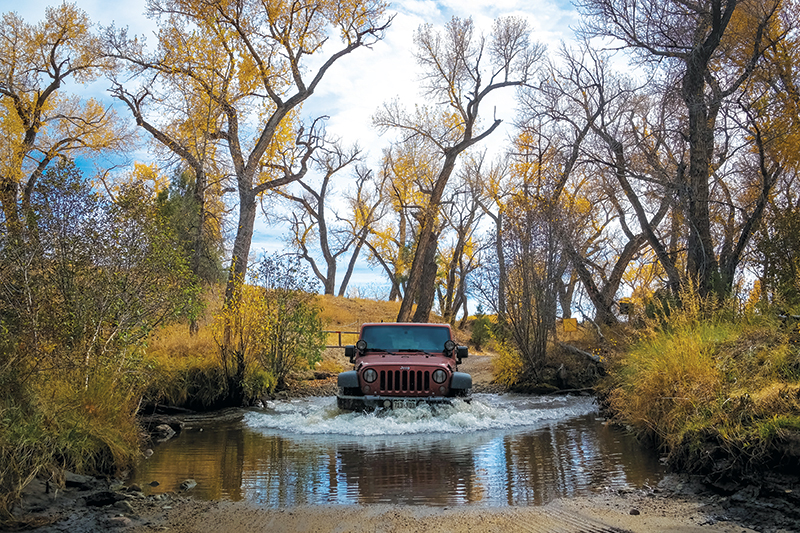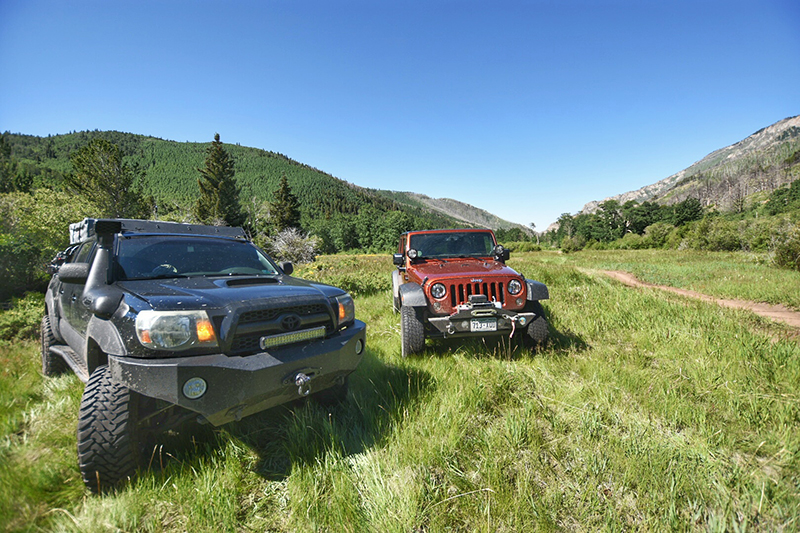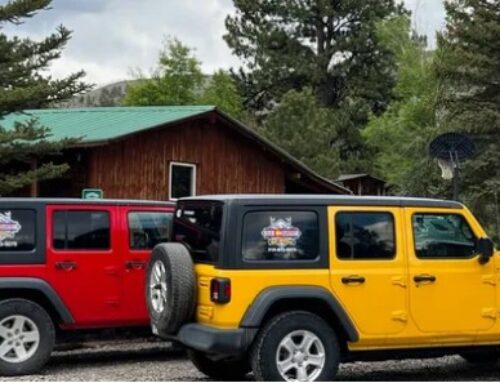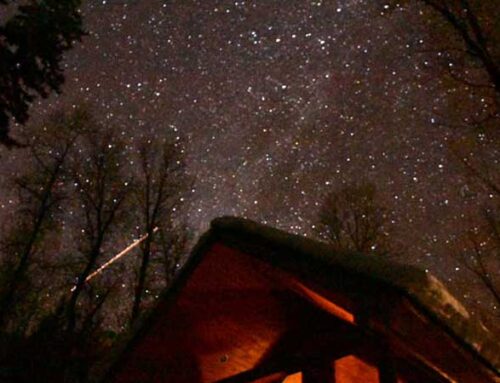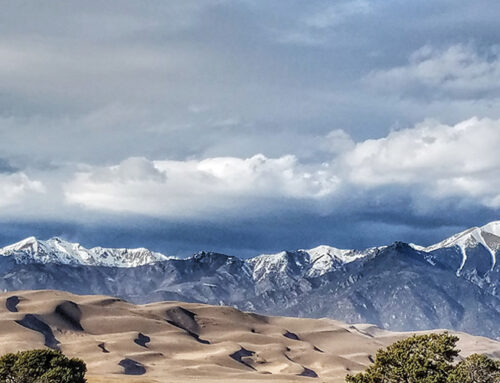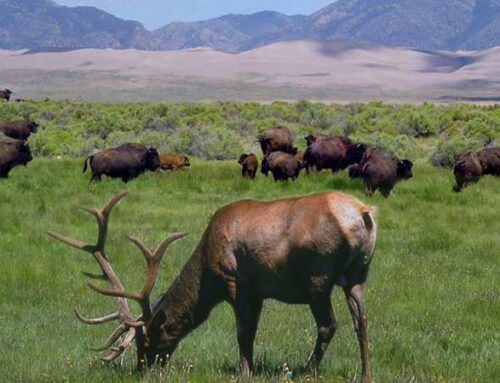Article & Photos by Field Editor Ryan Michelle Scavo
Great Sand Dunes National Park is one of the many gems of the San Luis Valley. Resting on the far east side of the valley below the impressive and rugged Sangre de Cristo peaks, the park boasts impressive environments including a dune field that is home to the tallest dune in North America, alpine lakes and tundra, subalpine forests and meadows, and extensive grasslands, shrublands, and wetlands.
Across these environments and ecosystems, visitors have opportunities to explore trails, view wildlife, “surf” the dunes, splash in creeks and engulf themselves in the park’s 150,000 acres by foot, bike, sand board, or 4×4/4WD vehicles.
For off-road enthusiasts, Medano (pronounced MEDah- no) Pass is the perfect destination! Of course, as most off-roaders know, the destination is only half of the reason for going off-road – the other half is all about the journey; and the journey along Medano Pass Primitive Road is one to remember.
Whether Jeeping or 4-wheeling in a high-clearance pickup or SUV (ATVs are prohibited), this scenic backcountry route takes visitors through soft sand trails and creek-crossings (across Medano Creek), over boulders, and through a scenic forested canyon until reaching Medano Pass, located high above the park at an elevation just over 10,000 feet above sea level.
The 22 mile road is rough and not for the faint of heart. To access, first drive to Great Sand Dunes National Park by following highway 160 east out of Alamosa for approximately 14 miles. Take Highway 150 north for approximately 19 miles to the park entrance. Once in the park, follow the paved road to the sign and trailhead for “Medano Pass Primitive Road” near Pinion Flats Campground. Additional information can be obtained at the park Visitor Center or website.
Once at the trailhead, make sure you are prepared for variable weather and trail conditions and that your vehicle is equipped with the gear necessary to safely travel the route, a 2-3 hours round-trip. Additionally, visitors looking to air tires down for a smoother ride (~20 pounds of pressure if sand is soft/dry) should know that free air pump stations are available at the south entrance to the road.
In the first 5 miles of the Medano Pass Primitive Road, visitors will drive along a sandy trail past several picnic areas with views of the dunes and surrounding grasslands. Remember that this is a multi-use trail, so hikers/backpackers, fat-bikers, and horseback riders frequent this stretch. Pit toilets are also available along this stretch. Additionally, for those only looking for a taste of this route, turn-around points available in this section of the trail include Point of No Return (1.1 mile), Sand Pit (1.8 miles), Castle Creek (2.6 miles) and the first Medano Creek crossing (4.5 miles), however, once into the preserve, most turn-around points are actually campsites. Be aware of your surroundings and make sure to print out a map from the park’s web page or pick up a map at the visitor center.
The next section of trail will take transition travelers from the National Park side of Great Sand Dunes to the National Preserve. Great Sand Dunes is one of seven National Park Service units with the designation of “National Park and Preserve” – a designation which allows public hunting, trapping, and other special activities. Once in this section of the park, off-roaders will begin to see denser forests as the trail begins to steepen.
The trail climbs several rocky sections and passes through 8 more creek crossings until the last half mile climb to Medano Pass. While the pass does not offer a scenic overlook, it does feature an informational wayside exhibit about the history of the trail and area and once at the top, visitors have the option of returning via the same path, or continuing east toward the town of Westcliffe.
In addition driving the trail, the Preserve provides camping opportunities for visitors looking for an overnight experience. Twenty-one roadside camping sites along the Medano Pass Primitive Road are available on a first come, first-served basis (starting after mile 5.2). Designated by brown posts with camping symbols, sites are numbered by the approximate road mileage from the Park/Preserve boundary to the pass. Please note that sites fill up quickly on weekends and holidays. No permit is necessary.
If the rocky, rugged trail experience isn’t enough, other opportunities to experience and explore the preserve are available including hiking, hunting, fishing and wildlife viewing. For more information, visit the Great Sand Dunes National Park website or visitor center.



